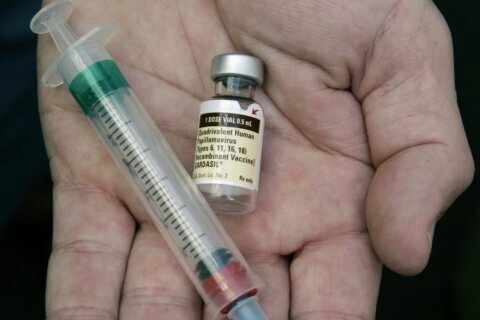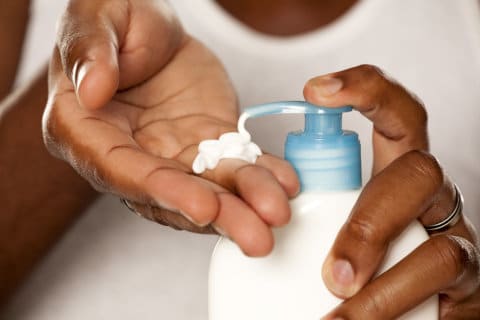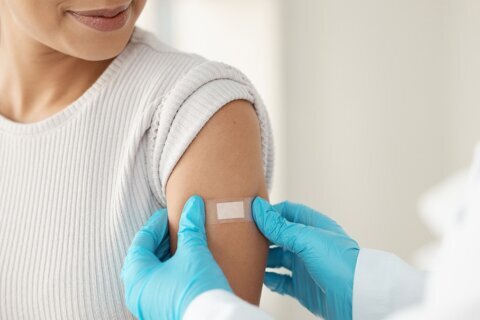Breast is best
If there’s one thing everyone tells you about breast-feeding, it’s “do it.” After all, breast-feeding has been linked to a host of benefits, including better cognitive development and a lower risk of obesity in children, as well as improved recovery from childbirth and a reduced risk for postpartum depression in mothers. Plus, it’s free. But just because breast is best doesn’t mean it’s simple. Here’s what you should know before the first latch:
1. You’ll need to protect your time.
For the first few weeks of her son’s life, Ashley Schall was tired, sore from a C-section and overwhelmed with breast-feeding what seemed like all day, every day. Then, she realized the chores could wait. “As soon as I accepted that, it was like a weight lifted, and I started to really enjoy breast-feeding,” says Schall, 34, of Eldersburg, Maryland. Protecting those first few weeks from visitors and other distractions is critical for breast-feeding success, says Diane Spatz, a nurse researcher who directs the lactation program at Children’s Hospital of Philadelphia. “Eat, sleep and breast-feed your baby.”
2. You have rights.
Each state has different laws regarding breast-feeding in public and at work, but few women know about them, says Spatz, also a professor of perinatal nursing and nutrition at the University of Pennsylvania School of Nursing. The Affordable Care Act also requires employers of hourly workers to provide breast-feeding moms reasonable time and space (not a bathroom) to pump during the first year of the child’s life. Curious about the protections in your state? The National Conference of State Legislatures is a great resource, Spatz says.
3. You will be hungry.
Forget the post-baby boot camps, and say hello to breast-feeding! If you have a healthy, full-term baby whom you breast-feed exclusively, you’ll burn about 500 calories a day, says Dr. Stephanie Romero, an assistant professor of obstetrics and gynecology and maternal-fetal medicine at the University of South Florida Morsani College of Medicine. “It’s better than taking a three-mile run,” she says. And like that run, it requires hydration and fuel, so drink plenty of water and avoid crash diets in order to maintain your milk supply.
4. Your diet doesn’t have to be perfect.
A healthy diet is, of course, important for your own health and to nourish your baby, but you don’t have to eat like an angel for your little one to reap breast-feeding’s benefits, Spatz says. Outside of fish with high mercury levels, “mothers can really eat pretty much anything,” she says, though eating a varied diet is best in order to expose your baby to different tastes and nutrients. As for alcohol? Keep it to one drink — and breast-feed or pump before you imbibe, Spatz says.
5. Your breasts have a mind of their own.
Soon after Romero gave birth, she was back to work delivering (other women’s) babies. Her breasts took heed and leaked — a lot. “Sounds and sights of another baby can definitely stimulate let-down,” says Romero, who recommends carrying nursing pads “just in case.” Sex, too, can cause leaking because oxytocin, an orgasm-induced hormone, also ejects breastmilk, Spatz says. She suggests using a shield during sex or pumping before getting frisky.
6. It may make sex hurt.
Speaking of sex, it can feel different — even painful — since breast-feeding affects your hormones and can cause vaginal dryness. But that’s no reason to abstain from sex or give up on breast-feeding, Spatz says. Instead, “have an open and honest conversation” with your doctor about ways to alleviate the pain. “There are alternatives” like lubricant, she says.
7. Some pain is normal, other pain is not.
When Lisa Engle, a 46-year-old in Atlanta, started breast-feeding, her nipples cracked and bled. “I had to breathe through the first moments of nursing nearly as much as I had with contractions,” she says. While pain during the initial seconds of nursing is normal for the first few weeks, Romero says, bleeding, blistered or infected nipples, or persistent pain are reasons to contact your provider. You may have mastitis — a painful and flu-like infection caused by a blocked milk duct — or your baby may be latching incorrectly or have a condition that restricts the tongue’s movement.” If there is pain … you don’t wait, you get help right away,” Spatz says. Mastisis, for one, is treated with antibiotics.
8. ‘Flat nipples’ are a thing.
Schall’s breast-feeding got off to a rough start. She had already endured a high-risk pregnancy via in vitro fertilization and an emergency C-section. Then, she learned she had flat nipples. “Who knew?” she says. Flat and inverted nipples affect up to 10 percent of new moms and can make it tough for the baby to latch, Romero says. Fortunately, the issue can usually be overcome with expert guidance, manual techniques and tools like nipple shields. The latter, Schall says, “truly saved our breast-feeding relationship.”
9. It can be isolating — or a group effort.
Schall had her baby, Gus, in the winter. That meant staying inside all day, every (short, dark) day, to nurse. “It was very isolating at the beginning,” she says. For other women, the experience can take a village if, for example, they use donor milk or need extra hands to hold a shield or massage their nipples to stimulate milk. “Support [and] being aware that it usually doesn’t go like clockwork are essential,” says Amanda Nelson, a 34-year-old in Marietta, Georgia, whose son needed two tongue clippings before he could breast-feed at three months. Indeed, research links social support to breast-feeding exclusively for longer.
10. You’re not a bad mom if you don’t do it.
Every time Christina Whirl, 33, bought formula, a fellow shopper would ask her if she was breast-feeding. Their questions were unwelcome. “I really just wanted … to shout that I was giving it my all,” says Whirl, who “constantly” tried to pump and breast-feed, but didn’t produce enough milk. Romero says some women, such as those who have HIV or are undergoing chemotherapy, shouldn’t breast-feed. Others may not for a variety of reasons. For them, formula is safe, as long as it’s prepared and stored correctly, Romero says. “If [breast-feeding] is not an option, there is much more to being a mom than being the source of food.”
More from U.S. News
10 Ways to Make Your Childbirth Easier
The Fertility Preservation Diet: How to Eat if You Want to Get Pregnant
The Best and Worst Exercises for Pregnant Women
10 Things No One Tells You About Breast-feeding originally appeared on usnews.com







